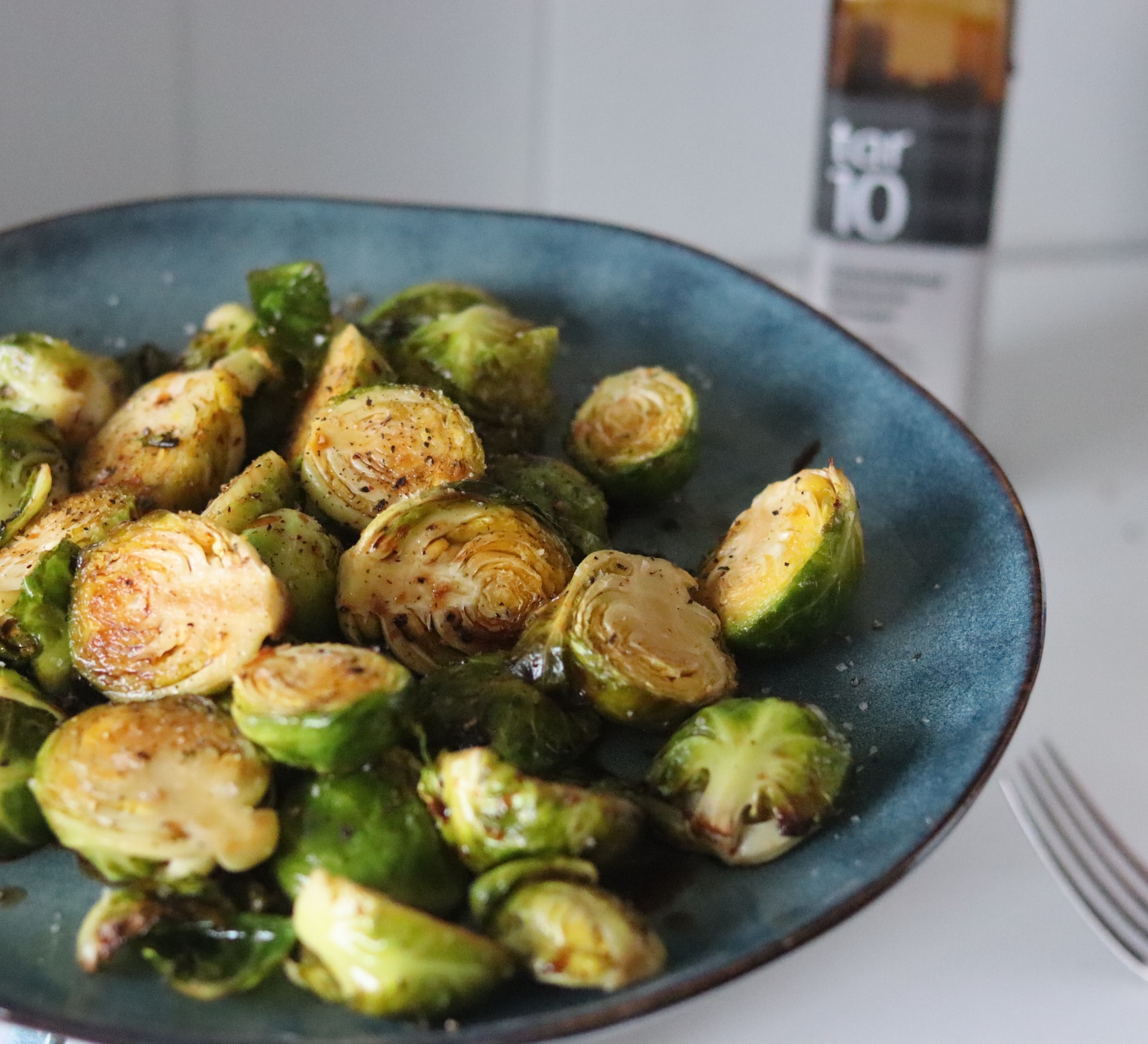Brussels Sprouts can be quite easy to grow with a bit of knowledge. If you have never seen how they grow it is quite impressive.
This post was written for and first published on Earth, Food and Fire.
Brussels Sprouts are cruciferous, belonging to the family Brassicaceae. Plants grow in tall columns with harvestable buds called sprouts. The main stems can grow anywhere from 2 – 4 feet tall. Leaves grow along the stem with the sprouts which look like miniature cabbages. emerging between the leaf nodes.

When and Where Should I Plant Brussels Sprouts
Brussels sprouts are a cold weather crop. They have a long growing season requiring anywhere from 90 – 140 days to harvest, which means you need to start them early in the season. Be sure to look at harvest times when selecting seeds to be sure you can successfully go them in your area.
Though they will tolerate a light frost (in fact they say the sprouts are better after a touch of frost) plan to harvest within a week or two after your first fall frost dates. Plan accordingly to your growing season to be sure of a successful harvest.
Start your brussels sprouts indoors 3 – 4 weeks before your last frost of the season. All you need are a few little 6 pack growing cells, potting soil and light. The seeds germinate quickly and can be transplanted into the garden once they are about 3 inches tall and have 6 – 8 leaves.
Work the soil well and add amendments to help improve soil texture and drainage. It is a good time to add compost and work it well into the planting area.
Space the transplants 18 – 24 inches apart. Brussels sprouts love sun so be sure to plant them where they receive 6 – 8 hours a day. Because they can be susceptible to club root be sure to really pat down the soil around the base of the transplants to avoid air pockets in the soil.
Caring for Brussels Sprouts
Depending on where you live you may want to consider staking your brussels sprouts. Because of the height of the plants they can be knocked over if you garden someplace that experiences high winds. Simply support the stem with garden stakes.
Another important practice when growing brussels sprouts is to remove the leaves off the bottom of the plants once you see sprouts developing between the leaf nodes. Using something sharp like hand held pruners or even scissors, remove all the leaves from the bottom 2/3s of the plant. This helps direct energy into producing nice sized sprouts. You don’t need to trim right against the stalk, just remove as much as the stem as possible without damaging the emerging sprouts.

Fertilizing Brussels Sprouts
Like all members of the cabbage family, brussels sprouts are nitrogen hogs and to have a successful crop you will want to feed the plants with a nitrogen rich fertilizer.
Nitrogen is represented by the first number you see on any type of fertilizer ex: 20-20-20. Look for a fertilizer where that first number is a bit high than the other two. Give them a good feed every three weeks following the directions for the particular fertilizer you are using.
Note: because brussels sprouts are such aggressive nitrogen consumers you will need to plant them in a different location each season using a 4-year crop rotation schedule.

Harvesting Brussels Sprouts
The plants mature from the bottom up. Start harvesting the sprouts when they are nicely formed and an inch wide. Starting at the bottom of the plant give the sprout a good twist and pull down to remove from the stem. You could also use a small knife. Only harvest what you need until the forecast dictates otherwise. You can harvest from the base of many plants allowing the upper sprouts to continue to grow and mature.
If you are doing a large harvest you can save some time by harvesting the entire stem of sprouts. To harvest the stem pull the entire plant out of the soil. Using a sharp knife remove the roots and the top leaves off the plant. To force everything to mature at the same time you can top the brussels sprout plants a week or two before the final harvest.

Storing Brussels Sprouts
Store Brussels Sprouts in the fridge for a week. Give them a good wipe but do not wash before storing. The extra moisture can cause early rot in your sprouts.
Brussels sprouts are also great to freeze. Blanch brussels sprouts for 2 minutes then plunge into an ice water bath to stop the cooking. Dry the sprouts as much as possible. Spread the sprouts onto baking sheets place in the freezer until sprouts are frozen. Bag the sprouts in heavy duty freezer bags.









